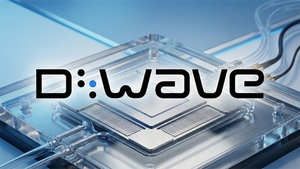You don’t need the latest, flashiest mining gear to get into crypto. In fact, building a profitable mining business with used equipment is not only possible — it’s a smart way to start if you’re strategic about it.
Here’s a practical, no-fluff guide to doing just that.
Why Used Mining Gear Might Be Your Best Bet
Let’s talk dollars first.
Used mining rigs can cost 40–60% less than new ones. That means you’ll reach break-even much faster — and for small businesses or solo miners, that’s a big deal.
And here’s another perk: no waitlists. While new machines often come with shipping delays and backorders, used equipment is usually ready to go. If you play your cards right, you can be mining in days, not months.
Laying the Groundwork for Your Business
Do Your Homework
Before you buy anything, know what you’re getting into. Check mining profitability calculators, compare different coins (not just Bitcoin), and see what works best with older hardware. Sometimes it makes more sense to mine altcoins like Monero or Ethereum Classic with used GPUs.
Watch out for:
- Current and projected mining difficulty
- Power costs in your area
- Expected market prices of crypto assets
Power Is Everything
Used miners are power-hungry. You’ll need access to cheap and reliable electricity, or your margins will evaporate. Look for industrial spaces or rural locations where power is inexpensive. If you’re paying standard residential rates, it’s going to be a tough climb.
Don’t Skimp on Infrastructure
Older miners tend to run hotter and noisier. Make sure your space has proper ventilation and cooling. Otherwise, you’ll burn out your gear — and your profits.
Buying Smart: How to Shop for Used Miners
Always Check the Condition
Ask for photos, videos, and preferably live tests. Don’t take “works fine” at face value. Look out for:
- Overheating marks
- Dust buildup or signs of rust
- Worn fans or weird noises
- Non-matching serial numbers (a red flag for counterfeits)
Get the Backstory
Where’s the miner been? Has it been overclocked? Was it running in a warehouse in Arizona heat or a cool facility in Canada?
Ask questions like:
- How many hours was it running daily?
- Any parts replaced?
- Was it modified?
Stick With Trusted Sellers
Don’t buy off some random guy on social media. Go with platforms or resellers who specialize in mining gear and offer at least some warranty — even a 30-day one is better than nothing.
Pro tip: Check out miners for sale from vetted providers that deal exclusively in mining hardware.
Testing & Deployment
Know What You’re Working With
Older models aren’t always bad — especially the tried-and-true ones. Antminer S9s, for example, are still workhorses in the right setup.
Once you’ve got your equipment:
- Run it for 24–48 hours to test stability
- Track hash rates against expected output
- Monitor temps, fan speeds, and power draw
- Double-check network connectivity and firmware updates
Don’t skip this. A miner that looks fine at first might fall apart under real-world loads.
Best Practices for Daily Ops
Get Hands-On with Maintenance
Used miners need love. Set up regular cleaning schedules. Replace thermal paste, keep an eye on fan health, and be proactive with repairs. A little upkeep can extend the lifespan significantly.
Watch Your Numbers Like a Hawk
Set up remote monitoring tools so you’re always aware of:
- Hashrate dips
- Power spikes
- Temperature anomalies
If something starts slipping, you’ll catch it early — before it kills your profitability.
Think Small Before Scaling Big
Start with a few rigs. Dial in your setup. Learn the quirks. Once things are running smoothly, then look at scaling up. This keeps your risk low and gives you room to learn as you go.
Managing Money and Risks
Diversify Your Fleet
Don’t put all your budget into one model or one coin. Spread out your risk. That way, a drop in one algorithm or coin value doesn’t wipe you out.
Budget for Repairs
Stuff breaks. Budget around 15–25% of your gear’s value per year for repairs, part replacements, or even full rig swaps.
Think Ahead
The goal isn’t to run used miners forever. Use the early profits to gradually reinvest into newer, more efficient hardware. Think of used equipment as your launchpad, not your forever solution.
Watch Out for These Pitfalls
- Shorter Lifespan: Don’t expect five more years out of a used rig. Plan replacements early.
- Firmware/Driver Gaps: Some older gear won’t get updates or support. Make sure you can get help when something breaks.
- Market Risk: If crypto prices dip or mining difficulty spikes, older gear feels the pain first. Always have an exit strategy.
Final Thoughts: It’s All About the Long Game
Used mining equipment can absolutely be the foundation of a profitable business — if you run it professionally.
It’s not a shortcut, but it is a smart start. Treat it like a business, not a hobby. Focus on:
- Doing proper due diligence
- Maintaining your gear like it’s a sports car
- Managing cash flow and reinvestments
With a hands-on mindset and the right strategy, you’ll not only mine coins — you’ll build a mining business that lasts.





